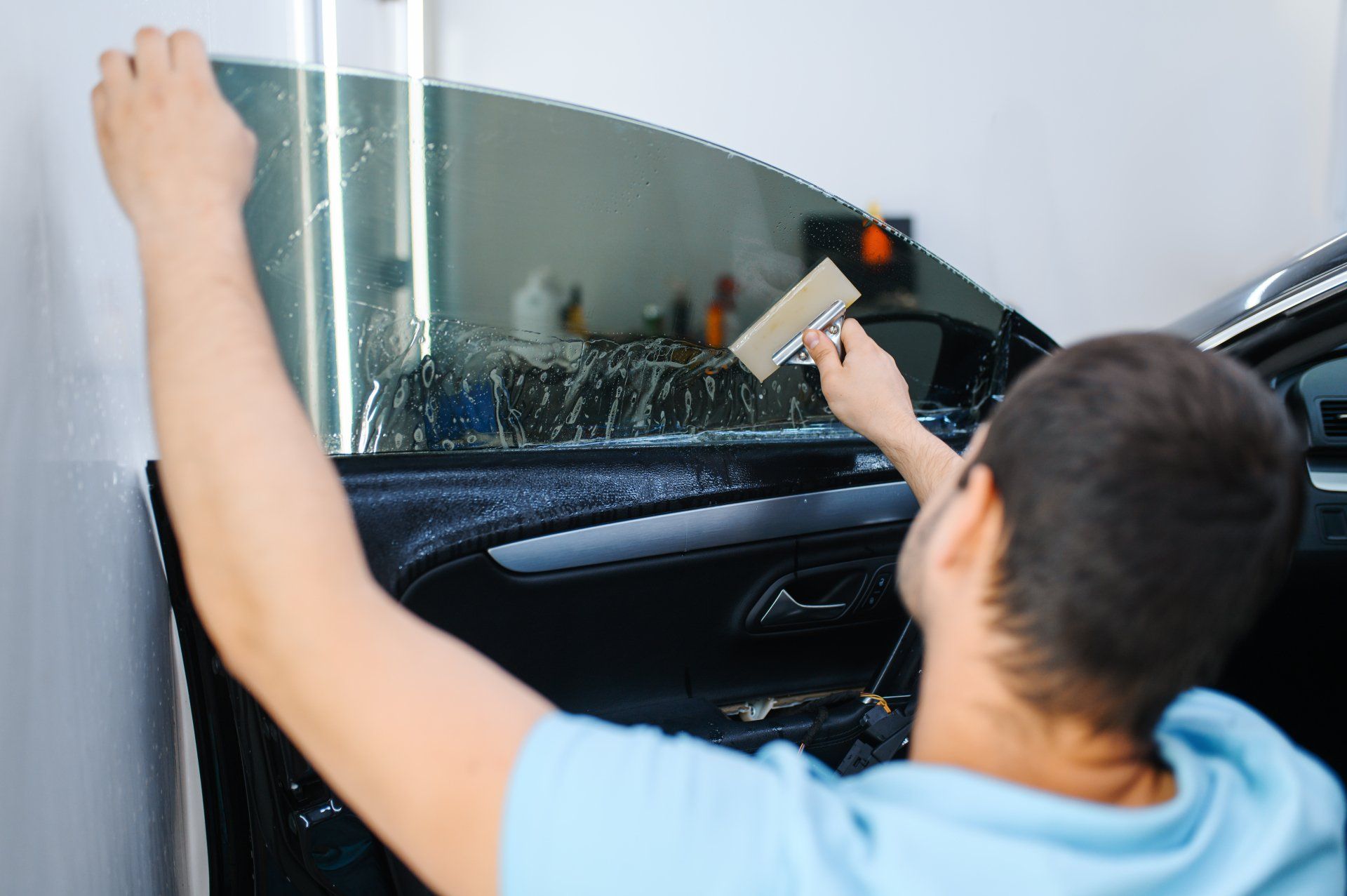The Process of Professional Home Window Tinting Explained
From choosing the right movie kind to the meticulous preparation of windows, each step plays an important role in accomplishing a flawless application. Complying with these preliminary preparations, the mindful cutting and application of the movie need precision to prevent imperfections.
Choosing the Right Window Movie
The preliminary factor to consider is the kind of film, which can vary from colored, metalized, to ceramic movies (window tinting). Colored films mainly supply personal privacy and visual enhancement, while metalized films reflect warm and UV rays, improving power efficiency.
Following, consider the movie's Visible Light Transmission (VLT) portion, which identifies just how much light gets in the room. A reduced VLT offers greater privacy and heat denial however may minimize all-natural light considerably. In addition, the film's solar heat gain coefficient (SHGC) is vital; a reduced SHGC indicates better thermal efficiency, aiding to keep interior convenience.

Preparing the Windows
As soon as the ideal home window movie has been selected, the following step is completely preparing the home windows for installation. This preparation is important for achieving optimum bond and making certain a remarkable look post-installation.
The very first job entails cleansing the windows diligently (window tinting). A high-quality glass cleanser is essential, ideally one that is ammonia-free to avoid harmful any window seals or color materials. Making use of a lint-free towel or paper towels, technicians must get rid of any kind of dirt, dirt, or grease, paying special interest to the sides and corners where particles commonly gathers

Cutting the Movie
A specific technique to reducing the movie is necessary for guaranteeing a perfect fit on the ready windows. This step calls for both ability and interest to detail, as inaccuracies can result in unpleasant voids or overlaps that compromise the aesthetic and functional qualities of the color.
Before reducing, the specialist ought to measure the home window dimensions properly, accounting for any type of unique forms or shapes. It is a good idea to use top quality home window movie, as this material visit homepage has a tendency to be extra flexible throughout the reducing procedure. The film is generally laid flat on a tidy, smooth surface, and a sharp utility blade is employed to make certain clean sides.
To achieve optimal outcomes, many professionals use layouts created from previous installations or use software application to design specific patterns. An usual method includes adding an added margin to useful site the template, permitting for changes during the application stage.
Additionally, cutting the movie in a controlled atmosphere lessens the risk of contaminants impacting the adhesive side. By adhering to these thorough techniques, home window tinting specialists can guarantee that the film not only fits seamlessly but likewise executes effectively gradually, enhancing both look and functionality.
Using the Tint
After diligently reducing the film to the appropriate measurements, the following step entails using the color to the home window surface area. This process starts with making certain that the window is tidy and without any type of dirt, particles, or residues that might influence adhesion. A specific cleaning remedy is typically utilized, complied with by thorough drying with a lint-free fabric.
When the surface is prepared, the installer will carefully position the color film against the glass. It is critical to align the film accurately to avoid misplacement, as any errors can lead to an unprofessional appearance. To promote this, the installer might make use of a light haze of application remedy on the sticky side of the movie, permitting for slight repositioning if required.
Using a squeegee, the installer will then begin to press the movie onto the glass, working from the center outwards to get rid of air bubbles and ensure a company bond. This technique is crucial, as it ensures a smooth and flawless coating. Throughout the application, find more info attention to detail is crucial to avoid creases or flaws, ensuring that the color not just enhances appearances but likewise offers the desired capability.
Last Evaluation and Care
The last assessment is an essential action in the window tinting process, making sure that the installment fulfills both visual and practical requirements. Throughout this stage, experts thoroughly analyze the installed tint for any type of blemishes, such as bubbles, creases, or misalignments. A complete evaluation additionally includes checking the adherence of the film to the glass, along with its harmony and general appearance.
After the assessment, proper care and maintenance instructions are offered to the customer. It is necessary to inform them about the suggested timeline for cleansing the colored windows, usually encouraging a wait of at the very least 1 month after installment to allow the glue to heal fully. Clients should be educated on appropriate cleaning items and methods, highlighting the evasion of ammonia-based cleansers that can damage the tint.
Additionally, professionals need to suggest customers on the significance of regular upkeep to prolong the life of the color. This includes regular checks for indicators of wear or damage and reacting without delay to any kind of problems. By ensuring a thorough last assessment and supplying clear care standards, window tinting specialists boost consumer fulfillment and the long life of their work.
Conclusion
The expert window tinting process includes a number of essential actions that make sure top quality outcomes. Selecting the ideal film kind, preparing the windows meticulously, precisely reducing the film, and applying it with precision are necessary for achieving a remarkable finish. A thorough final assessment guarantees that all criteria are met, while appropriate post-installation care is essential for maintaining the tint's longevity and efficiency. Abiding by these treatments ultimately improves both the visual allure and capability of the colored windows.
Comments on “Specialist vs Do It Yourself Window Tinting: Which Option is Right for You?”